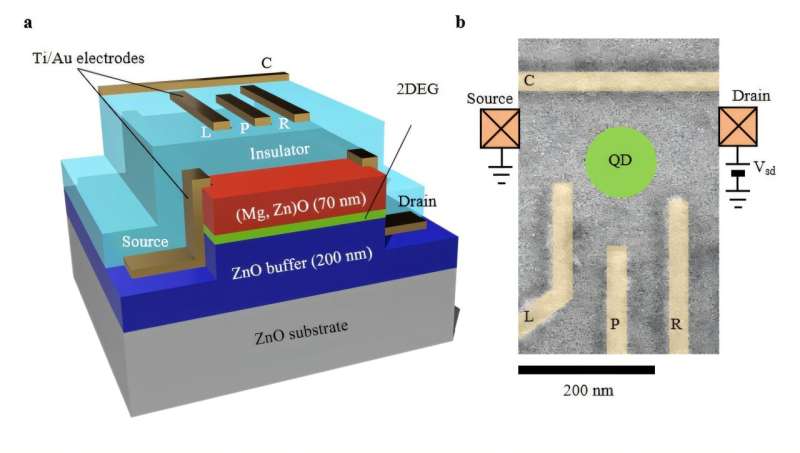
November 26, 2024 by Tohoku University
Collected at: https://phys.org/news/2024-11-pathway-quantum-devices-electrically-dots.html
Researchers have successfully created electrically defined quantum dots in zinc oxide (ZnO) heterostructures, marking a significant milestone in the development of quantum technologies.
Details of their breakthrough were published in the journal Nature Communications on November 7, 2024.
Quantum dots, tiny semiconductor structures that can trap electrons in nanometer-scale spaces, have long been studied for their potential to serve as qubits in quantum computing. These dots are crucial for quantum computing because they allow scientists to control the behavior of electrons, similar to how a conductor might control a current of water flowing through pipes.
Until now, most research has focused on materials such as gallium arsenide (GaAs) and silicon. However, zinc oxide, a material known for its strong electron correlation and excellent spin quantum coherence, had not yet been explored for use in electrically defined quantum dots, i.e., those created and controlled using electrical methods.
In this study, the research team was able to manipulate the internal states of quantum dots in zinc oxide using precise voltage control—like adjusting the dials on a radio to fine-tune a signal. This innovation allowed them to observe the Coulomb diamond, a key characteristic of quantum dots, providing insights into the behavior of electrons trapped inside.

“The Coulomb diamond is like a fingerprint that helps identify the unique ‘personality’ of each quantum dot,” says Tomohiro Otsuka, an associate professor at Tohoku University and corresponding author of the paper. “By using zinc oxide, we’re opening up new frontiers developing efficient and stable qubits, a cornerstone for quantum computing.”
One of the most remarkable findings of this study was the discovery of the Kondo effect in zinc oxide quantum dots. The Kondo effect, a quantum phenomenon where electron interactions create conduction, typically depends on the number of electrons in the quantum dot. However, in zinc oxide, the researchers observed this effect even when the number of electrons did not fit the usual pattern. This new behavior, linked to the material’s strong electron correlation, adds another layer of complexity and potential to zinc oxide-based quantum devices.
“The Kondo effect we observed is different from what we typically see in other semiconductors like GaAs,” adds Otsuka. “This difference could help us better understand electron behavior in this new material and improve our ability to control and manipulate qubits.”
Looking ahead, the team is focused on harnessing these new findings to develop practical quantum devices.
More information: Kosuke Noro et al, Parity-independent Kondo effect of correlated electrons in electrostatically defined ZnO quantum dots, Nature Communications (2024). DOI: 10.1038/s41467-024-53890-2
Journal information: Nature Communications

Leave a Reply